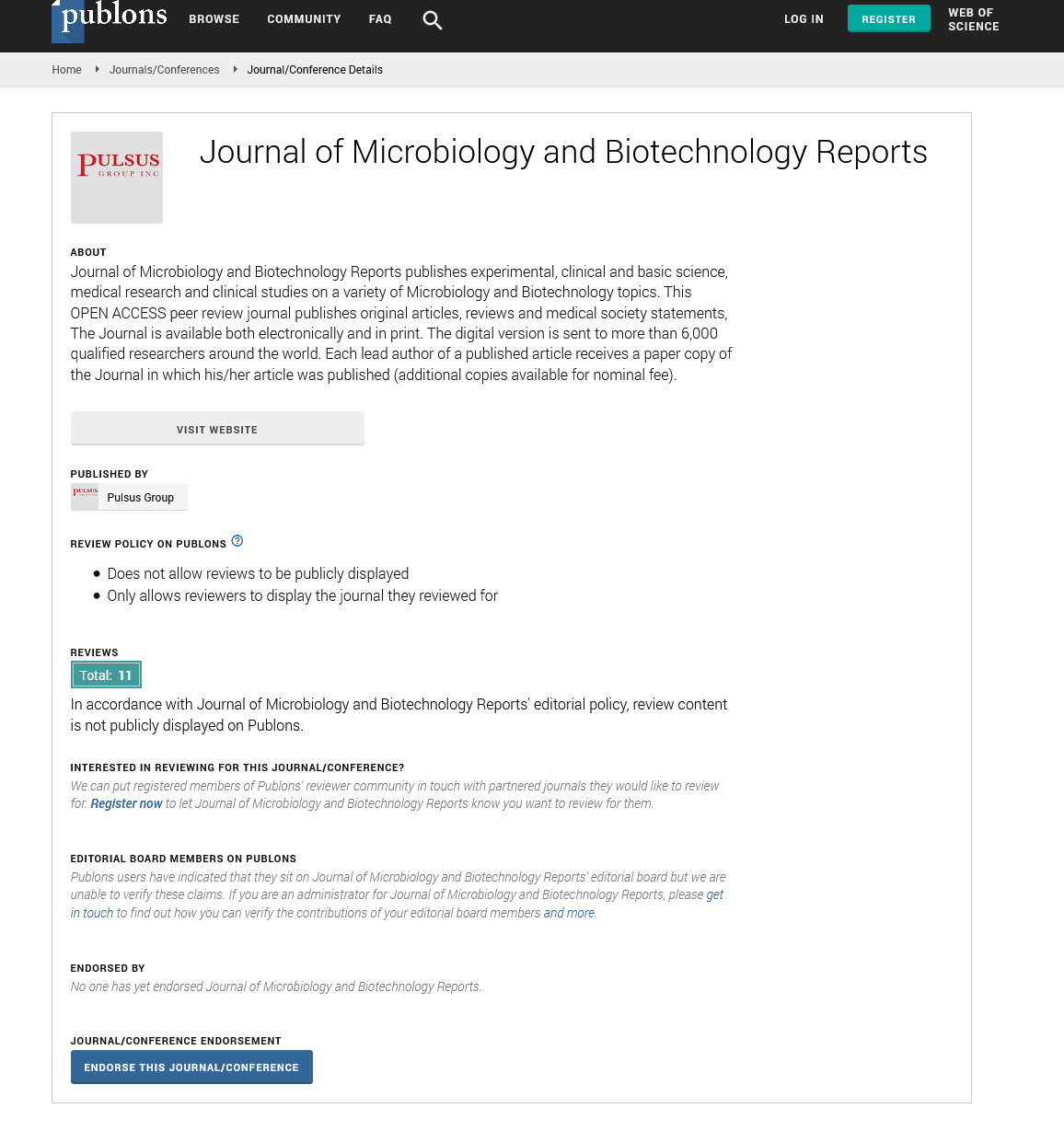An Advanced Study on Tuberculosis (TB), caused by Mycobacterium Tuberculosis
Received: 03-Nov-2021 Accepted Date: Nov 17, 2021; Published: 24-Nov-2021
This open-access article is distributed under the terms of the Creative Commons Attribution Non-Commercial License (CC BY-NC) (http://creativecommons.org/licenses/by-nc/4.0/), which permits reuse, distribution and reproduction of the article, provided that the original work is properly cited and the reuse is restricted to noncommercial purposes. For commercial reuse, contact reprints@pulsus.com
Commentary
Tuberculosis (TB), caused by Mycobacterium tuberculosis, is the main cause of death worldwide, due to a single infectious agent (Mello, Silva, & Dalcolmo, 2018). Multidrug-resistant TB (MDR TB) is resistant to both isoniazid and rifampicin (the two standard TB drugs), and may or may not be resistant to other drug/s; hence, it (i.e., MDR TB) is a great cause of worry, and a major challenge to any TB control programme.
The objective of this cross-sectional study is to analyze the socio-demographic and the clinical profiles, along with some management indicators, of 23 MDR TB patients at the Domjur Block, Howrah District, West Bengal, India, in 2018. Thus, it is a twofold project with two sub-objectives.
One of the sub-objectives is to study the influence of six important criteria (viz., age, sex, religion, educational status, occupational status, and family income) related to the socio-demographic profile of 23 MDR TB patients at the Domjur Block, on the occurrence of MDR TB in that block, in 2018, using the binomial test at 5% level of significance
The other sub-objective is to record data about the clinical profile of those 23 MDR TB patients, and some key indicators corresponding to the management of those patients by the health centre at the Domjur Block. The indicators are expected to help in understanding how the RNTCP (Revised National Tuberculosis Control Programme) of the Government of India, was going on in that block, in 2018.
The Domjur Block was selected by the random sampling method among the blocks of the Howrah District. Before performing this study, a brief literature survey was done, but no work related to the MDR TB patients of Domjur, was founded. This project has attempted to throw some light on the relationships between the occurrence of MDR TB and some criteria associated with the socio-demographicb profile of MDR TB patients and also on the performance of the RNTCP, with only a small amount of data. A more comprehensive picture about the occurrence of MDR TB could have been obtained, if other criteria related to the sociodemographic profile of the MDR TB patients were also incorporated in the study. Besides, if a control group of non-MDR TB patients were included, the results would have been more accurate. Moreover, if other blocks were also considered, higher number of patients would have been available for study, and hence, the scope of the work would have increased. If possible, all these assignments can be taken up in future. If data on other indicators pertaining tothe management of the MDR TB patients by the health centre. This study was carried out in Microbiology and Immunology department, Faculty of Pharmacy for Girls , Al-Azhar University and Medical Ain-Shams
Research Institute(MASRI), Faculty of Medicine, Ain-Shams University on seventy four isolates that were collected from hospital laboratories for inpatients admitted to Urology, Surgery, pediatric, orthopedics, GIT disorders, pediatric intensive care unit and Neonatal intensive care unit departments in addition to adult Intensive care and open heart units after 48-72hrs.of hospitalization from two tertiary care hospitals in Cairo and one private tertiary care hospital in Giza during the period from July2017 till June 2018.
Acknowledgements
The authors are grateful to the journal editor and the anonymous reviewers for their helpful comments and suggestions.
Declaration of Conflicting Interests
The authors declared no potential conflicts of interest for the research, authorship, and/or publication of this article.





